Numbers Stations and Enigma Stations
These are mysterious signals that are found to be connected to possible number station activity or considered enigmatic in behavior and content. Usually suspected to be transmitted by government services.
Numbers Station Signals[edit]
| Inactive (No longer in use) |
Active (Currently in active use) |
Status Unknown or Intermittent |
| Signal Name | Description | Frequency | Mode | Modulation | Bandwidth | Location | Sample Audio | Waterfall image |
|---|---|---|---|---|---|---|---|---|
| CIS MFSK-16 XPA2 | Enigma Designation XPA2, also known as MFSKMultiple Frequency Shift-Keying-16, CISCommonwealth of Independent States (CIS), the former Soviet Republic MFSKMultiple Frequency Shift-Keying-14, and CISCommonwealth of Independent States (CIS), the former Soviet Republic MFSKMultiple Frequency Shift-Keying-16, is a 14-tone MFSKMultiple Frequency Shift-Keying signal said to have origin from Russian Intelligence and Foreign Ministry stations. | 3 MHzMegaHertz (MHz) 10^6 Hz — 30 MHzMegaHertz (MHz) 10^6 Hz | USBUpper Side Band Modulation (Radio, referring to reception and modulation mode)Universal Serial Bus (Computer, referring to USB Ports and cables) | MFSKMultiple Frequency Shift-Keying | 250 HzHertz (Hz), unit of frequency, defined as one cycle per second (1 Hz). | Russia | 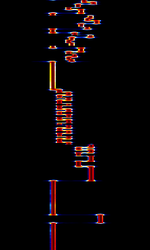 |
|
| CIS MFSK-16 XPB | Enigma designation XPB is a custom 16-tone MFSKMultiple Frequency Shift-Keying mode said to have origin from Russian Intelligence and Foreign Ministry stations. | 4.4 MHzMegaHertz (MHz) 10^6 Hz — 20 MHzMegaHertz (MHz) 10^6 Hz | USBUpper Side Band Modulation (Radio, referring to reception and modulation mode)Universal Serial Bus (Computer, referring to USB Ports and cables) | MFSKMultiple Frequency Shift-Keying | 2.8 kHzKiloHertz (kHz) 10^3 Hz | Russia | 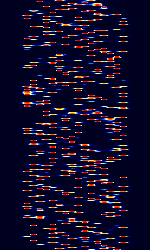 |
|
| CIS MFSK-20 XPA | Enigma Designation XPA, also known as MFSKMultiple Frequency Shift-Keying-20, CISCommonwealth of Independent States (CIS), the former Soviet Republic MFSKMultiple Frequency Shift-Keying-17, and CISCommonwealth of Independent States (CIS), the former Soviet Republic MFSKMultiple Frequency Shift-Keying-20, is a 17-tone MFSKMultiple Frequency Shift-Keying signal said to have origin from Russian Intelligence and Foreign Ministry stations. | 3 MHzMegaHertz (MHz) 10^6 Hz — 30 MHzMegaHertz (MHz) 10^6 Hz | USBUpper Side Band Modulation (Radio, referring to reception and modulation mode)Universal Serial Bus (Computer, referring to USB Ports and cables) | MFSKMultiple Frequency Shift-Keying | 800 HzHertz (Hz), unit of frequency, defined as one cycle per second (1 Hz). | Russia | 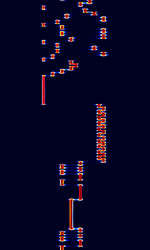 |
|
| CIS MFSK-68 | New Russian MFSKMultiple Frequency Shift-Keying Modem that uses 68 MFSKMultiple Frequency Shift-Keying (5 tones at a time) as well as a 9000 BdBaud (unit symbol Bd) is the unit for symbol rate or modulation rate in symbols per second. 8-PSK8-Phase Phase-Shift Keying (3 bits per symbol) insert every second which spans 10 kHzKiloHertz (kHz) 10^3 Hz wide. This signal is often found attributed with CISCommonwealth of Independent States (CIS), the former Soviet Republic-3000, where CISCommonwealth of Independent States (CIS), the former Soviet Republic-3000 acts as the ALEAutomatic Link Establishment for this signal as well as CISCommonwealth of Independent States (CIS), the former Soviet Republic-128. It is used by Russian diplomatic services and known with the unofficial name "Perelivt". | 7.659 MHzMegaHertz (MHz) 10^6 Hz — 18.28 MHzMegaHertz (MHz) 10^6 Hz | USBUpper Side Band Modulation (Radio, referring to reception and modulation mode)Universal Serial Bus (Computer, referring to USB Ports and cables) | MFSKMultiple Frequency Shift-Keying, PSKPhase-Shift Keying | 10 kHzKiloHertz (kHz) 10^3 Hz | Russia | 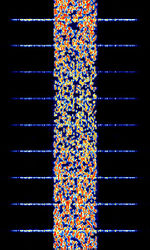 |
|
| F03 numbers station | Enigma designation F03 is a family of digital FSKFrequency-Shift Keying modes, used by the "Polish 11" numbers station operator, which is likely a Polish intelligence agency. | 4 MHzMegaHertz (MHz) 10^6 Hz — 21 MHzMegaHertz (MHz) 10^6 Hz | USBUpper Side Band Modulation (Radio, referring to reception and modulation mode)Universal Serial Bus (Computer, referring to USB Ports and cables) | FSKFrequency-Shift Keying, MFSKMultiple Frequency Shift-Keying | 200 HzHertz (Hz), unit of frequency, defined as one cycle per second (1 Hz). — 800 HzHertz (Hz), unit of frequency, defined as one cycle per second (1 Hz). | Worldwide, Poland | 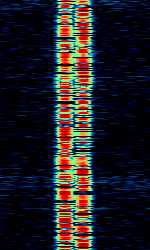 |
|
| F07 number station | F07 is a Russian digital number station known for using multiple modulation types, including MFSKMultiple Frequency Shift-Keying, BPSKBinary Phase-Shift Keying (1 bit per symbol) and FSKFrequency-Shift Keying. | 5 MHzMegaHertz (MHz) 10^6 Hz — 17.5 MHzMegaHertz (MHz) 10^6 Hz | USBUpper Side Band Modulation (Radio, referring to reception and modulation mode)Universal Serial Bus (Computer, referring to USB Ports and cables) | MFSKMultiple Frequency Shift-Keying, BPSKBinary Phase-Shift Keying (1 bit per symbol), FSKFrequency-Shift Keying | 4 kHzKiloHertz (kHz) 10^3 Hz | Russia | 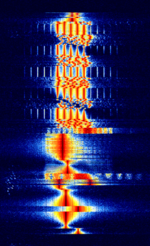 |
|
| Mazielka (X06) | Mazielka (X06) is a diplomatic selcall system used by the Russian Ministry of Foreign Affairs. Used to alert that a Serdolik transmission is going to occur soon, usually on a different frequency. | 4.963 MHzMegaHertz (MHz) 10^6 Hz — 23.458 MHzMegaHertz (MHz) 10^6 Hz | USBUpper Side Band Modulation (Radio, referring to reception and modulation mode)Universal Serial Bus (Computer, referring to USB Ports and cables) | MFSKMultiple Frequency Shift-Keying | 200 HzHertz (Hz), unit of frequency, defined as one cycle per second (1 Hz). | Russia | 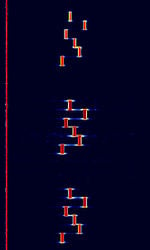 |
|
| North Korean Diplo FSK | North Korean Diplomatic FSKFrequency-Shift Keying link, teletype radio diplomatic usage. Also known as DPRK-FSKFrequency-Shift Keying, KRE-FSKFrequency-Shift Keying, DPRK-ARQAutomatic Repeat reQuestAutomatic Repeat Query, and KEGURI. Has a FECForward Error Correction stream mode and a burst ARQAutomatic Repeat reQuestAutomatic Repeat Query mode. | 9 MHzMegaHertz (MHz) 10^6 Hz — 29 MHzMegaHertz (MHz) 10^6 Hz | USBUpper Side Band Modulation (Radio, referring to reception and modulation mode)Universal Serial Bus (Computer, referring to USB Ports and cables) | FSKFrequency-Shift Keying | 1.2 kHzKiloHertz (kHz) 10^3 Hz — 1.4 kHzKiloHertz (kHz) 10^3 Hz | North Korea | 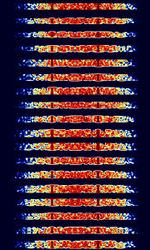 |
|
| P03 numbers station | Enigma designation P03 is a family of digital PSKPhase-Shift Keying modes, used by the "Polish 11" numbers station operator, which is likely a Polish intelligence agency. | 4 MHzMegaHertz (MHz) 10^6 Hz — 21 MHzMegaHertz (MHz) 10^6 Hz | USBUpper Side Band Modulation (Radio, referring to reception and modulation mode)Universal Serial Bus (Computer, referring to USB Ports and cables) | BPSKBinary Phase-Shift Keying (1 bit per symbol), QPSKQuadrature Phase-Shift Keying (2 bits per symbol) | 200 HzHertz (Hz), unit of frequency, defined as one cycle per second (1 Hz). | Worldwide, Poland | 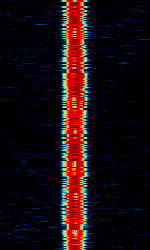 |
|
| P07 numbers station | Enigma designation P07 is a custom digital mode used by the "Russian 7" numbers station operator which is likely a major Russian intelligence agency. | 4.6 MHzMegaHertz (MHz) 10^6 Hz — 10.45 MHzMegaHertz (MHz) 10^6 Hz | USBUpper Side Band Modulation (Radio, referring to reception and modulation mode)Universal Serial Bus (Computer, referring to USB Ports and cables) | FSKFrequency-Shift Keying, BPSKBinary Phase-Shift Keying (1 bit per symbol), QPSKQuadrature Phase-Shift Keying (2 bits per symbol), OFDMOrthogonal Frequency-Division Multiplexing | 3.5 kHzKiloHertz (kHz) 10^3 Hz | Russia | 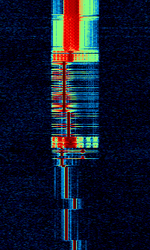 |
|
| Polish Intelligence 100bd 625Hz FSK | Also known as F11, this is a one-way broadcast system that was used by one of Polish intelligence agencies for delivery of messages to their operatives abroad on fixed schedules. | 4 MHzMegaHertz (MHz) 10^6 Hz — 20 MHzMegaHertz (MHz) 10^6 Hz | USBUpper Side Band Modulation (Radio, referring to reception and modulation mode)Universal Serial Bus (Computer, referring to USB Ports and cables) | FSKFrequency-Shift Keying | 3.5 kHzKiloHertz (kHz) 10^3 Hz | Poland | 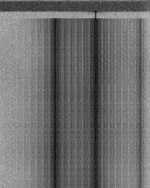 |
|
| Redundant Digital File Transfer (RDFT) | RDFT is an amateur radio digital mode used to transmit files. | 9.065 MHzMegaHertz (MHz) 10^6 Hz — 9.24 MHzMegaHertz (MHz) 10^6 Hz | USBUpper Side Band Modulation (Radio, referring to reception and modulation mode)Universal Serial Bus (Computer, referring to USB Ports and cables) | PSKPhase-Shift Keying | 1.8 kHzKiloHertz (kHz) 10^3 Hz | Worldwide | 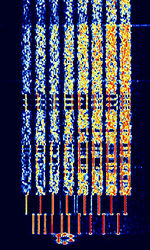 |
|
| Russian Diplo VFT PSK 64Bd | Russian Diplomatic 3 channel VFTVoice Frequency Telegraphy PSKPhase-Shift Keying running at 64 BdBaud (unit symbol Bd) is the unit for symbol rate or modulation rate in symbols per second.. Enigma M42 designation | 4.022 MHzMegaHertz (MHz) 10^6 Hz — 23.131 MHzMegaHertz (MHz) 10^6 Hz | USBUpper Side Band Modulation (Radio, referring to reception and modulation mode)Universal Serial Bus (Computer, referring to USB Ports and cables) | PSKPhase-Shift Keying | 2.5 kHzKiloHertz (kHz) 10^3 Hz | Russia | 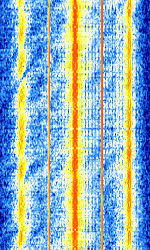 |
|
| Russian Intelligence 200bd 1000Hz FSK (F06) | Also known as F06, this is a one-way error-correcting broadcast system, used by one of Russian intelligence agencies for delivery of messages to their operatives abroad on fixed schedules. | 4 MHzMegaHertz (MHz) 10^6 Hz — 23 MHzMegaHertz (MHz) 10^6 Hz | USBUpper Side Band Modulation (Radio, referring to reception and modulation mode)Universal Serial Bus (Computer, referring to USB Ports and cables) | FSKFrequency-Shift Keying | 1 kHzKiloHertz (kHz) 10^3 Hz | Russia | 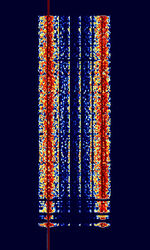 |
|
| Russian Intelligence 200bd 500Hz FSK (F01) | Also known as F01, this is a digital FSKFrequency-Shift Keying mode used by Russian intelligence to deliver encrypted messages to their operatives abroad. Transmissions usually happen on fixed schedules. | 4 MHzMegaHertz (MHz) 10^6 Hz — 23 MHzMegaHertz (MHz) 10^6 Hz | USBUpper Side Band Modulation (Radio, referring to reception and modulation mode)Universal Serial Bus (Computer, referring to USB Ports and cables) | FSKFrequency-Shift Keying | 500 HzHertz (Hz), unit of frequency, defined as one cycle per second (1 Hz). | Russia |  |
|
| SP-14 (XP) | SP-14 (XP) was a 14 tone MFSKMultiple Frequency Shift-Keying mode with origins from the Russian Intelligence and Foreign Ministry. Also known as NUM-13. Inactive since 2005, superseded by XPA. | 9 MHzMegaHertz (MHz) 10^6 Hz — 12 MHzMegaHertz (MHz) 10^6 Hz | AMAmplitude Modulation | MFSKMultiple Frequency Shift-Keying | 1.2 kHzKiloHertz (kHz) 10^3 Hz | Russia | 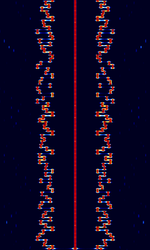 |
|
| The Buzzer (ZhUOZ MDZhB UZB76) | The Buzzer, call-sign NZhTI (formerly ANVF, ZhUOZ, MDZhB and UZB-76), is a Russian Military Commandment system signal used to broadcast diplomatic ciphered messages known as "monolit" to the russian navy. If there is no message to broadcast, its "homing" signal is a loud ship-horn buzzing sound. It is believed to serve a similar purposes to The Alarm and The Air Horn. | 4.625 MHzMegaHertz (MHz) 10^6 Hz | AMAmplitude Modulation | USBUpper Side Band Modulation (Radio, referring to reception and modulation mode)Universal Serial Bus (Computer, referring to USB Ports and cables) | 2.8 kHzKiloHertz (kHz) 10^3 Hz | Russia | 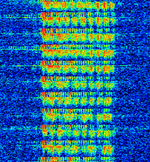 |
|
| The Pip | The Pip is the nickname given by radio listeners to a shortwave radio station that broadcasts on the frequency 5448 kHzKiloHertz (kHz) 10^3 Hz by day, and 3756 kHzKiloHertz (kHz) 10^3 Hz during the night. It broadcasts short, repeated beeps at a rate of around 50 per minute, for 24 hours per day. The beep signal is occasionally interrupted by voice messages in Russian. The Pip has been active since around 1986 when its distinctive beeping sound was first recorded by listeners. While its official name or callsign is not known, some of the voice transmissions begin with the code 8S1Shch (Cyrillic: 8С1Щ), which is generally considered to be the name of the station. However, this code may not be a callsign, but instead, serve some other purpose. Radioscanner.ru identifies the owner of this station as a North-Caucasian military district communication center with callsign "Akacia" (ex-72nd communication center, Russian "72 узел связи штаба СКВО") | 3.756 MHzMegaHertz (MHz) 10^6 Hz — 5.448 MHzMegaHertz (MHz) 10^6 Hz | USBUpper Side Band Modulation (Radio, referring to reception and modulation mode)Universal Serial Bus (Computer, referring to USB Ports and cables),AMAmplitude Modulation | Russia |  |
Detailed Information[edit]
A numbers station is a type of shortwave radio station characterized by unusual broadcasts, reading out lists of numbers or incomprehensible coded messages. The voices are often created by speech synthesis and are transmitted in a wide variety of languages. The voices are usually female, although sometimes men's or children's voices are used. Some voices are synthesized and created by machines; however, some stations used to have live readers. Many numbers stations went off the air due to the end of the Cold War in 1989, but many still operate and some have even continued operations but changed schedules and operators.
The first known use of numbers stations was during World War I, and the first possible listener was Anton Habsburg of Austria. The numbers were transmitted in Morse code. The Ministry of the Interior Czech Republic|Czech Ministry of Interior and the Swedish Security Service have both acknowledged the use of numbers stations by Czechoslovakia for espionage, with declassified documents proving the same. With a few exceptions, no QSL card responses have been received from numbers stations by shortwave listeners who sent reception reports to said stations, which is the expected behavior of a non-clandestine station.
The best known of the numbers stations was the Lincolnshire Poacher, which is thought to have been run by the British Secret Intelligence Service.
In 2001, the United States tried the Cuban Five on the charge of spying for Cuba. That group had received and decoded messages that had been broadcast from Cuban numbers stations. Also in 2001, Ana Belen Montes, a senior US Defense Intelligence Agency analyst, was arrested and charged with espionage. The federal prosecutors alleged that Montes was able to communicate with the Cuban Intelligence Directorate through encoded messages, with instructions being received through "encrypted shortwave transmissions from Cuba". In 2006, Carlos Alvarez and his wife, Elsa Alvarez, were arrested and charged with espionage. The U.S. District Court Florida stated that "defendants would receive assignments via shortwave radio transmissions".
In June 2009, the United States similarly charged Walter Kendall Myers with conspiracy to spy for Cuba and receiving and decoding messages broadcast from a numbers station operated by the Cuban Intelligence Directorate to further that conspiracy.
It has been reported that the United States used numbers stations to communicate encoded information to persons in other countries. There are also claims that State Department operated stations, such as KKN50 and KKN44, used to broadcast similar "numbers" messages or related traffic.
Suspected origins and use[edit]
According to the notes of The Conet Project, which has compiled recordings of these transmissions, numbers stations have been reported since World War I. If accurate, this would count numbers stations among the earliest radio broadcasts.
It has long been speculated, and was argued in court in one case, that these stations operate as a simple and foolproof method for government agencies to communicate with spies working undercover. According to this theory, the messages are encrypted with a one-time pad, to avoid any risk of decryption by the enemy. As evidence, numbers stations have changed details of their broadcasts or produced special, nonscheduled broadcasts coincident with extraordinary political events, such as the Soviet coup attempt of 1991 in the Soviet Union.
Numbers stations are also acknowledged for espionage purposes in Robert Wallace and H. Keith Melton's Spycraft:
"The one-way voice link (OWVL) described a covert communications system that transmitted messages to an agent's unmodified shortwave radio using the high-frequency shortwave bands between 3 and 30 MHzMegaHertz (MHz) 10^6 Hz at a predetermined time, date, and frequency contained in their communications plan. The transmissions were contained in a series of repeated random number sequences and could only be deciphered using the agent's one-time pad. If proper tradecraft was practiced and instructions were precisely followed, an OWVL transmission was considered unbreakable. ... As long as the agent's cover could justify possessing a shortwave radio and he was not under technical surveillance, high-frequency OWVL was a secure and preferred system for the CIA during the Cold War.
Others speculate that some of these stations may be related to illegal drug smuggling operations.Unlike government stations, smugglers' stations would need to be lower powered and irregularly operated, to avoid location by triangulated direction finding. However, numbers stations have transmitted with impunity for decades, so they are generally presumed to be operated or sponsored by governments. Additionally, numbers station transmissions in the international shortwave bands typically transmit at high power levels that might be unavailable to ranches, farms, or plantations in isolated drug-growing regions.
High frequency radio signals transmitted at relatively low power can travel around the world under ideal propagation conditions, which are affected by local RFRadio Frequency noise levels, weather, season, and sunspots, and can then be received with a properly tuned antenna of adequate size, and a good receiver. However, spies often have to work only with available hand-held receivers, sometimes under difficult local conditions, and in all seasons and sunspot cycles. Only very large transmitters, perhaps up to 500,000 watts, are guaranteed to get through to nearly any basement-dwelling spy, nearly any place on earth, nearly all of the time. Some governments may not need a numbers station with global coverage if they only send spies to nearby countries.
A 1998 article in The Daily Telegraph quoted a spokesperson for the Department of Trade and Industry (the government department that, at that time, regulated radio broadcasting in the United Kingdom) as saying, "These numbers stations are what you suppose they are. People shouldn't be mystified by them. They are not for, shall we say, public consumption."
On some stations, tones can be heard in the background. In such cases, the voice may simply be an aid to tuning to the correct frequency, with the actual coded message being sent by modulating the tones, using a technology such as burst transmission.
The use of numbers stations as a method of espionage is discussed in 'pycraft:
"The only item Penkovsky used that could properly be called advanced tradecraft was his 'agent-receive' communications through a one-way voice-link. These encoded messages, known as OWVL, were broadcast over shortwave frequencies at predetermined times from a CIA-operated transmitter in Western Europe. Penkovsky listened to these messages on a Panasonic radio—strings of numbers read in a dispassionate voice—and then decoded them using a one-time pad."
Identifying and locating[edit]
Numbers stations are often given nicknames by enthusiasts, often reflecting some distinctive element of the station such as their interval signal. For example, the "Lincolnshire Poacher", formerly one of the best known numbers stations (generally thought to be run by SIS, as its transmissions have been traced to RAF Akrotiri in Cyprus), played the first two bars of the folk song "The Lincolnshire Poacher" before each string of numbers.
The "Atención" station was thought to be from Cuba, as a supposed error allowed Radio Havana Cuba to be carried on the frequency.
Several articles in the radio magazine Popular Communications published in the 1980s and early 1990s described hobbyists using portable radio direction-finding equipment to locate numbers stations in Florida and in the Warrenton, Virginia, areas of the United States. From the outside, they observed the station's antenna inside a military facility, the Warrenton Training Center. The station hunter speculated that the antenna's transmitter at the facility was connected by a telephone wire pair to a source of spoken numbers in the Washington, D.C., area. The author said the Federal Communications Commission would not comment on public inquiries about American territory numbers stations.
According to an internal Cold War era report of the Polish Ministry of Interior, numbers stations DCF37 (3370 kHzKiloHertz (kHz) 10^3 Hz) and DFD21 (4010 kHzKiloHertz (kHz) 10^3 Hz) transmitted from West Germany since the early 1950s.
Atención spy case[edit]
The "Atención" station of Cuba became the world's first numbers station to be officially and publicly accused of transmitting to spies. It was the centerpiece of a United States federal court espionage trial following the arrest of the Wasp Network of Cuban spies in 1998. The U.S. prosecutors claimed the accused were writing down number codes received from Atención, using Sony hand-held shortwave receivers, and typing the numbers into laptop computers to decode spying instructions. The FBI testified that they had entered a spy's apartment in 1995, and copied the computer decryption program for the Atención numbers code. They used it to decode Atención spy messages, which the prosecutors unveiled in court.
United States government evidence included the following three examples of decoded Atención messages. (Not reported whether the original clear texts were in Spanish, although the phrasing of "Day of the Woman" would indicate so.)
- "prioritize and continue to strengthen friendship with Joe and Dennis"
- "Under no circumstances should agents German nor Castor fly with BTTR or another organization on days 24, 25, 26 and 27." (BTTR is the anti-Castro airborne group Brothers to the Rescue)
- "Congratulate all the female comrades for International Day of the Woman." (Probably a simple greeting for International Women's Day on 8 March)
At the rate of one spoken number per character per second, each of these sentences takes more than a minute to transmit.
The moderator of an e-mail list for global numbers station hobbyists claimed, "Someone on the Spooks list had already cracked the code for a repeated transmission from Havana to Miami if it was received garbled." Such code-breaking is possible if a one-time pad decoding key is used more than once.If used properly, however, the code cannot be broken.
Formats[edit]
Generally, numbers stations follow a basic format, although there are many differences in details between stations. Transmissions usually begin on the hour or half-hour.
The prelude, introduction, or call-up of a transmission (from which stations' informal nicknames are often derived) includes some kind of identifier, either for the station itself and/or for the intended recipient. This can take the form of numeric or spelling alphabet|radio-alphabet "code names" (e.g. "Charlie India Oscar", "250 250 250", "Six-Niner-Zero-Oblique-Five-Four"), characteristic phrases (e.g. "¡Atención!", "Achtung!", "Ready? Ready?", "1234567890"), and sometimes musical or electronic sounds (e.g. "The Lincolnshire Poacher", "Magnetic Fields"). Sometimes, as in the case of the Israeli radio-alphabet stations, the prelude can also signify the nature or priority of the message to follow (e.g., hypothetically "Charlie India Oscar-2", indicating that no message follows). Often the prelude repeats for a period before the body of the message begins.
After the prelude, there is usually an announcement of the number of number-groups in the message, the page to be used from the one-time pad, or other pertinent information. The groups are then recited. Groups are usually either four or five digits or radio-alphabet letters. The groups are typically repeated, either by reading each group twice, or by repeating the entire message as a whole.
Some stations send more than one message during a transmission. In this case, some or all of the above process is repeated, with different contents.
Finally, after all the messages have been sent, the station will sign off in some characteristic fashion. Usually it will simply be some form of the word "end" in whatever language the station uses (e.g., "End of message; End of transmission", "Ende", "Fini", "Final", "конец"). Some stations, especially those thought to originate from the former Soviet Union, end with a series of zeros, e.g., "00000" "000 000"; others end with music or other sounds.
Because of the secretive nature of the messages, the cryptography function employed by particular stations is not publicly known, except in one (or possibly two) cases. It is assumed that most stations use a one-time pad that would make the contents of these number groups indistinguishable from randomly generated numbers or digits. In one confirmed case, West Germany did use a one-time pad for numbers transmissions.
Transmission technology[edit]
Although few numbers stations have been tracked down by location, the technology used to transmit the numbers has historically been clear—stock shortwave transmitters using powers from 10 kW to 100 kW.
Amplitude modulated (AMAmplitude Modulation) transmitters with optionally–variable frequency, using class-C power output stages with plate modulation, are the workhorses of international shortwave broadcasting, including numbers stations.
Application of spectrum analysis to numbers station signals has revealed the presence of data bursts, RTTYRadio TeleTYpe-modulated subcarriers, phase-shifted carriers, and other unusual transmitter modulations like polytones. (RTTYRadio TeleTYpe-modulated subcarriers were also present on some U.S. commercial radio transmissions during the Cold War.)
The frequently reported use of high tech modulations like data bursts, in combination or in sequence with spoken numbers, suggests varying transmissions for differing intelligence operations.
For spies in the field, low-tech spoken number transmissions continue to have advantages in the 21st century. High-tech data receiving equipment is difficult to obtain, and being caught with just a shortwave radio has a degree of plausible deniability that no spying is being conducted whereas possessing equipment more advanced than a civilian shortwave news radio would raise more eyebrows and would more quickly be construed as evidence of spying than something as harmlessly commonplace as an AMAmplitude Modulation radio.
Interference with numbers stations[edit]
Numbers stations interfering with other broadcasts[edit]
The North Korean foreign language service Voice of Korea began to broadcast on the Lincolnshire Poacher's former frequency, 11545 kHzKiloHertz (kHz) 10^3 Hz, in 2006, possibly to deliberately interfere with its propagation. However, Lincolnshire Poacher broadcasts on not one, but three different frequencies, of which the remaining two have not been interfered with. The apparent target zone for the Lincolnshire Poacher signals originating in Cyprus was the Middle East, not the Far East, which is covered by its sister station, Cherry Ripe.
On 27 September 2006, amateur radio transmissions in the 30 m band were affected by an English-language "Russian Man" numbers station at 17:40 UTC.
The late "Havana Moon" reported in his own publication The Numbers Factsheet in October 1990 that "one particularly dangerous station has been interfering with air to ground traffic on 6577 kHzKiloHertz (kHz) 10^3 Hz, a frequency allocated to international aeronautical communications in the busy Caribbean sector". "On at least one monitored transmission, the air traffic controller at ARINC moved the pilot to an alternate frequency as the numbers transmission was totally blocking the frequency from effective use".
A BBC frequency, 7325 kHzKiloHertz (kHz) 10^3 Hz, has also been used. This prompted a letter to the BBC from a listener in Andorra. She wrote to the World Service Waveguide programme complaining that her listening had been spoiled by a female voice reading out numbers in English and asked the announcer what this interference was. The BBC presenter laughed at the suggestion of spy activity. He had consulted the experts at Bush House (BBC World Service headquarters), who declared that the voice was reading out nothing more sinister than snowfall figures for the ski slopes near the listener's home. After more research into this case, shortwave enthusiasts are fairly sure that this was a numbers station being broadcast on a random frequency.
Attempted jamming of numbers stations[edit]
Numbers station transmissions have often been the target of intentional jamming attempts. Despite this targeting, many numbers stations continue to broadcast unhindered. Historical examples of jamming include the YHF being jammed by the mysterious "Chinese Music Station".
Classification[edit]
Although many numbers stations have nicknames which usually describe some aspect of the station itself, these nicknames have sometimes led to confusion among listeners, particularly when discussing stations with similar traits. M. Gauffman of the ENIGMA numbers stations monitoring group originally assigned a code to each known station. Portions of the original ENIGMA group moved on to other interests in 2000 and the classification of numbers stations was continued by the follow-on group ENIGMA 2000.The document containing the description of each station and its code designation is called the "ENIGMA Control List", whose 26th edition was published in February 2016.This classification scheme takes the form of a letter followed by a number (or, in the case of some "X" stations, more numbers).The letter indicates the language used by the station in question:
- E indicates a station broadcasting in English.
- G indicates a station broadcasting in German.
- S indicates a station broadcasting in a Slavic language.
- V indicates all other languages.
- M is a station broadcasting in Morse code.
- X indicates all other transmissions, such as polytones, in addition to some unexplained broadcasts which may not actually be numbers stations.
For example, the well-known, defunct Lincolnshire Poacher station has the designation E3 (or E03); the Cuban "Atención" station has designation V2 (or V02). The most recent station to be given a designation is the Vietnamese language station V30.
There are also a few other stations with a specific classification:
- SK: Digital Mode
- HM: Hybrid Mode
- DP: Digital-Pseudo Polytone
Some stations have also been stripped of their designation when they were discovered not to be a numbers station. This was the case for E22, which was discovered in 2005 to be test transmissions for All India Radio.
Recordings[edit]
- The Conet Project: Recordings of Shortwave Numbers Stations is a four-Compact Disc set of recordings of numbers stations. It was first released in 1997 by the Irdial-Discs record label. A broadcast of these recordings can be heard here: [1]
- Samples from Conet Project recordings, most notably Tcp D1 3 Counting Control Irdial, are used by the Scottish electronic music group Boards of Canada on their 2002 album Geogaddi, most conspicuously on the track "Gyroscope".
- Samples from the tracks "tcp d4 11 konec konec irdial" and "tcp d2 08 the russian man d-va northern russian voice irdial" were used by American electronic music artist Flying Lotus on his 2008 album Los Angeles.
- Samples from the track "tcp d1 1 the swedish rhapsody irdial" are used by the alternative rock band Stereolab in the song "Pause" from their 1993 album Transient Random-Noise Bursts with Announcements.
External links[edit]
- "Numbers stations in popular culture"
- Priyom website
- Numbers stations audio recordings
- N&O Numbers stations recordings. newsletters and oddities
- Enigma machine - Wikipedia
Pages in category "Numbers Stations"
The following 21 pages are in this category, out of 21 total.
CEF |
MNPR |
R cont.
STV |